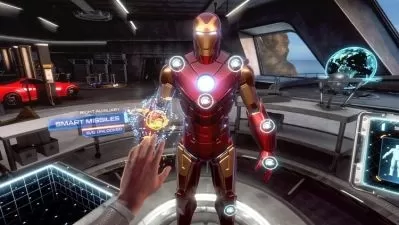Build Godzilla AR With Unity3D & New Immersive Technologies.
PolyPixel Studio
1:35:35
Description
Learn Fundamentals of Augmented Reality, Unity3D, Unreal Engine, Blender, Convai Artificial Intelligence AR.
What You'll Learn?
- Introduction to AR
- Introduction to AR Hardware,AR in Standalone,AR in Smartphone
- Solid augmented assets
- Solid augmented assets
- Hardware available for AR,Assets in AR
- Working with ARCore
- AR in shopping, AR in business,AR in gaming,AR in education,AR in healthcare
- Setting-up the development environment to design AR applications
- Select free and compatible 3D models for designing AR applications
- Build and deploy AR applications to mobile phones
- Understand the potential of augmented reality for businesses
- Understand the potential of augmented reality for businesses
- Propose Augmented Reality applications as solutions to real-world problems
Who is this for?
What You Need to Know?
More details
DescriptionThis course covers below mentioned topics
1. Augment Reality basics
•Introduction to AR
•Introduction to AR Hardware
•AR in Standalone
•AR in Smartphone
•Augmented Reality vs Virtual Reality – Difference and Similarities
2. Augmented Reality-Intermediate
•AR in shopping
•AR in business
•AR in gaming
•AR in education
•AR in healthcare
•Hardware available for AR
•What are assets in AR
•Solid augmented assets
•What is occlusion in AR
3. Tracking in AR
•Outside-in tracking
•Inside-out tracking
•Motion tracking
4. Augmented reality advance
•Understanding AR environment – features and planes
•Light Estimation Anchors
•Introduction to ARCore
•Fundamental to ARCore
•AR technical constraints
•Computer Vision constraints
•Understanding AR essentials
•Working with ARCore
•The 3D barrier
•Future of AR
Augmented Reality is a technology that enhances the real world by affixing layers of digital elements onto it. These elements include computer-generated graphics, sound or video effects, haptic feedback, or sensory projects.
The intention behind adding this digital information is to provide an engaging and dynamic customer experience that is enabled with the input received from varied hardware like smart glass, smart lenses, and smartphones.
Augmented Reality (AR) is often mistaken with Virtual Reality (VR). The main difference between the two is that while Virtual Reality replaces the entire real environment with an artificial one, Augmented Reality is applied in a direct view of an existing real environment and adds elements like sounds, videos, or graphics onto it.
Who this course is for:
- Those who want to marke carreer in Auguemented reality field , will be helpful to buid career in the field.
- Unity Developers interested in Augmented Reality platforms
- Anyone who wants to develop their own AR Applications
- Computer programming students interested in C# programming for building Augmented Reality applications
This course covers below mentioned topics
1. Augment Reality basics
•Introduction to AR
•Introduction to AR Hardware
•AR in Standalone
•AR in Smartphone
•Augmented Reality vs Virtual Reality – Difference and Similarities
2. Augmented Reality-Intermediate
•AR in shopping
•AR in business
•AR in gaming
•AR in education
•AR in healthcare
•Hardware available for AR
•What are assets in AR
•Solid augmented assets
•What is occlusion in AR
3. Tracking in AR
•Outside-in tracking
•Inside-out tracking
•Motion tracking
4. Augmented reality advance
•Understanding AR environment – features and planes
•Light Estimation Anchors
•Introduction to ARCore
•Fundamental to ARCore
•AR technical constraints
•Computer Vision constraints
•Understanding AR essentials
•Working with ARCore
•The 3D barrier
•Future of AR
Augmented Reality is a technology that enhances the real world by affixing layers of digital elements onto it. These elements include computer-generated graphics, sound or video effects, haptic feedback, or sensory projects.
The intention behind adding this digital information is to provide an engaging and dynamic customer experience that is enabled with the input received from varied hardware like smart glass, smart lenses, and smartphones.
Augmented Reality (AR) is often mistaken with Virtual Reality (VR). The main difference between the two is that while Virtual Reality replaces the entire real environment with an artificial one, Augmented Reality is applied in a direct view of an existing real environment and adds elements like sounds, videos, or graphics onto it.
Who this course is for:
- Those who want to marke carreer in Auguemented reality field , will be helpful to buid career in the field.
- Unity Developers interested in Augmented Reality platforms
- Anyone who wants to develop their own AR Applications
- Computer programming students interested in C# programming for building Augmented Reality applications
User Reviews
Rating
PolyPixel Studio
Instructor's Courses
Udemy
View courses Udemy- language english
- Training sessions 24
- duration 1:35:35
- Release Date 2024/12/03











